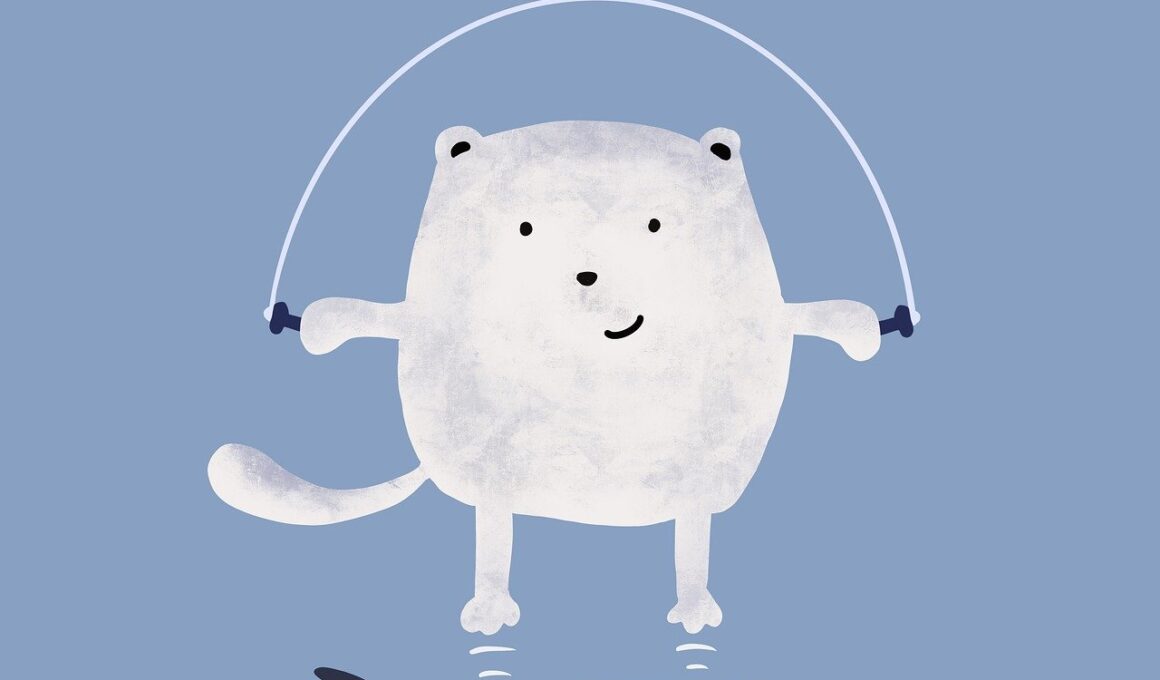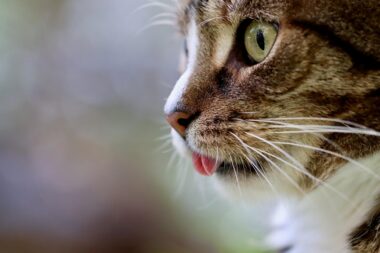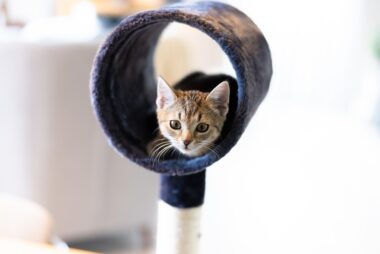The Importance of Regular Exercise in Cat Weight Management
Managing your cat’s weight is crucial for their overall health and wellbeing. Just like humans, cats that maintain a healthy weight are less likely to develop serious health issues in the future. Regular exercise plays a significant role in achieving and sustaining a healthy weight for your feline friend. Activities like chasing toys or engaging in interactive play can help burn calories effectively. Providing environmental enrichment can motivate your cat to stay active throughout the day, enhancing their physical fitness. By establishing a daily routine that includes exercise, you create a balanced lifestyle for your cat. When considering weight management, consulting with your veterinarian is essential. They can help determine your cat’s ideal weight and recommend a suitable exercise plan tailored to their specific needs. You should also weigh your cat regularly to monitor changes in weight accurately. Ensuring that your cat engages in routine physical activities helps combat obesity and related health problems. Regular exercise offers cognitive benefits too, keeping their minds sharp and engaged. Cats can exhibit improved mood and behavior, strengthening their bond with their owners and improving their quality of life.
Types of Exercises for Cats
Incorporating different types of exercises into your cat’s routine can significantly impact their weight management. It’s essential to select activities that align with your cat’s personality and preferences. Here are some effective exercises to consider: First, interactive play is a great way to start. Using toys like feather wands or laser pointers encourages your cat to stalk and pounce. Second, consider giving your cat climbing trees or shelves. Cats are naturally inclined to climb, which aids in burning calories while satisfying their instincts. Third, puzzle toys can stimulate both their mind and body. These toys dispense treats, making playtime both fun and rewarding. Fourth, setting up obstacle courses can promote agility and fitness, contributing to their overall exercise routine. Fifth, you could also take your cat on walks using a harness, offering outdoor exploration while burning energy. Finally, introducing regular training sessions helps improve behavior and physical health together. Incorporating various exercises keeps your cat engaged and active, assisting in weight management. Remember to monitor their response and adjust activities accordingly, ensuring a fun and safe environment during playtime. This variation is vital for maintaining interest.
Establishing a routine for your cat’s exercise is essential for consistency in their weight management. Schedule playtime at least once or twice daily to keep your cat engaged and active. Regularity helps them anticipate the time for exercise and can increase their excitement. Cats thrive on routine; they find comfort in predictability. To build a strong habit, involve all family members in playtime; this can help establish a community routine for your cat. Creating structured play sessions, with a mix of interactive and independent play, fosters both physical and mental exercise. Additionally, be sure to incorporate short training sessions that promote focus and enhance bonding. Monitoring your cat’s engagement levels during different activities helps you identify which games or toys they favor the most. Moreover, you should be adaptable to their changing preferences, as they can fluctuate over time. Tracking your cat’s progress through exercise journaling can also prove beneficial; it enables you to identify patterns that work best for them. Remember, every treat or snack should count towards their daily calorie intake. Maintaining an appropriate diet alongside a consistent exercise routine supports optimal weight management for your beloved feline companion.
Watching your cat play can be incredibly rewarding, as they exhibit natural hunting behaviors. Utilize this instinct by providing toys that mimic prey to make playtime more engaging. Feathered toys can encourage leaping and pouncing, while small balls or mice can instigate chasing. Rotating toys regularly maintains their novelty, stimulating curiosity and ensuring prolonged interest. When selecting toys, consider their safety first; avoid any small parts that could become choking hazards. Environments can also enhance exercise activities. Providing vertical spaces, such as cat towers or shelves, encourages climbing and exploration. Environmental enrichment offers a dual benefit: it challenges your cat mentally while promoting physical activity. Remember that every cat is unique; some may prefer slower activities while others crave vigorous play. Introducing new activities gradually helps your cat adjust to them comfortably. Consider connecting with other cat owners for ideas on engaging games and exercises. Also, video tutorials can be beneficial to observe form and technique. Channels focusing on pet care showcase various strategies to motivate your cat. Building a play schedule that includes the activities they enjoy fosters not only fitness but deepens your bond with your cat.
Monitoring Your Cat’s Progress
To optimize your cat’s weight management, consistently monitor their weight and body condition. Understanding how to evaluate your cat’s physical health is essential. You can learn to determine any noticeable changes in their body shape or overall appearance by analyzing their silhouette. Ideally, you should be able to feel your cat’s ribs without excess fat covering. You should also check for a visible waist when viewed from above. If your cat is becoming overweight or obese, consult your veterinarian immediately for guidance on correcting the issue and establishing a course of action. Regular weigh-ins at home help track progress efficiently; using a pet scale can assist in this process. Keeping records of your cat’s dietary intake and exercise routines can identify successful strategies. Assessing your cat’s activity level through apps or journals keeps you engaged with their progress. Adjusting their nutrition and exercise based on the results helps maintain proper weight. When making changes, proceed gradually to avoid overwhelming your pet. The goal is for them to develop sustainable habits that foster a healthy lifestyle. A systematic approach can lead to lasting benefits for your cat’s health.
Cat weight management is a lifelong commitment requiring compassion and understanding. As your cat ages, their exercise needs may shift, necessitating an adaptive approach to their routines. Older cats may prefer gentler activities as their energy levels decline. Adjusting exercises decreases the chance of injury while still providing engagement. Monitoring their dietary needs becomes even more important with age; consult your veterinarian for tailored nutritional advice. Weight management is not about restriction; instead, it’s about balancing activity and diet under their specific lifestyle requirements. Understanding a cat’s specific habits and preferences helps in creating a plan that is enjoyable and sustainable. Recognizing signs of your cat’s disinterest allows you to pivot towards more engaging activities. Additionally, remember to celebrate their progress, rewarding milestones with snippets of affection or praise. This emotional reinforcement creates positive associations with exercise, motivating them further. Maintain open communication with your veterinarian, as they can provide updated recommendations tailored to your cat’s individual needs. Together, through structured play, monitoring, and a positive approach, you can successfully manage your cat’s weight and ensure a long, healthy life. Your involvement is a critical factor in their ongoing success.
In conclusion, regular exercise plays a fundamental role in cat weight management. Balancing a healthy diet with proper exercise routines leads to optimal weight control and enhanced quality of life. The right mix of playful interaction, mental stimulation, and physical activities will ensure your cat remains happy and engaged. By incorporating a variety of enjoyable exercises and making adjustments as necessary, you set a foundation for lifelong health. Stay proactive and informed about your cat’s dietary needs to preserve their health. Keep in mind the importance of consulting with your veterinarian to stay updated with the best practices. Tracking your cat’s progress aids in staying committed to their health journey. You can identify successful strategies while maintaining a positive environment for fitness and playfulness. Encouraging their natural instincts and behaviors further contributes to their happiness and wellbeing. Celebrate their achievements alongside addressing challenges; doing so strengthens your bond with your feline friend. Ultimately, the result of a healthy cat is highlighted through their joy and vitality. With dedication, creativity, and love, you can succeed in managing your cat’s weight and fostering their overall well-being.





